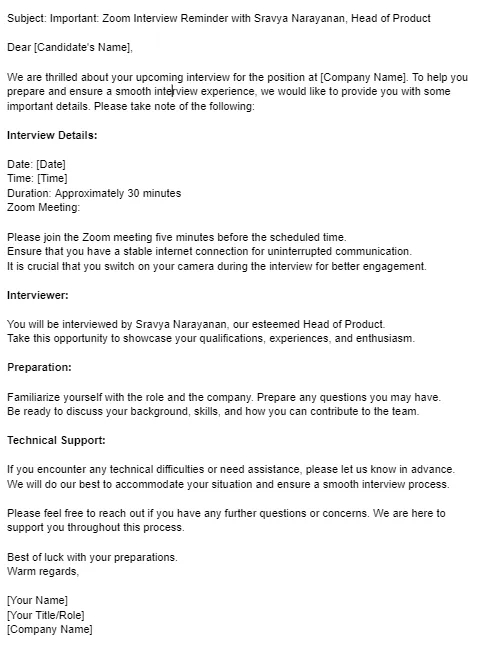Campus placements are a process where a company goes to colleges and universities to acquire talent for their company.
With online campus placements today, it is as easy as hiring folks from LinkedIn, Naukri, Newton School, or any job sites. HR gets a lot of filtration available at hand with campus placements. HRs can also know what to expect from the caliber of candidates when they choose a particular college.
Key advantages for employers in conducting campus placements.
There are multiple reasons why any company should consider doing campus placements. We have listed some below for you.
Access to Fresh Talent
Campus placements provide employers with direct access to a pool of fresh talent. They can connect with students who are about to graduate or have recently graduated, offering an opportunity to identify and hire promising individuals early in their careers.
Alignment with Company Culture
It is easier to mould undergrad students according to your company culture as they are new to the corporate world. For PG courses too, the students themselves have a mindset of imbibing the organization's ethos.
Cost and Time Efficiency
Campus placements can save employers significant time and resources in the hiring process. Instead of actively sourcing candidates on job platforms, conducting initial screenings, and organizing interviews, employers can leverage the structured campus placement process to streamline their hiring efforts.
Long-Term Investment
Hiring through campus placements allows employers to make long-term investments in talent acquisition. By hiring talented developers early in their careers, companies can nurture and develop their skills, grooming them to become valuable assets within the organization over time.
Industry Relevance
Campus placements enable employers to stay up-to-date with the latest industry trends and emerging technologies. They can tap into the knowledge and skills of students who have been exposed to the latest academic curricula, ensuring the company remains relevant and competitive in the fast-paced technology landscape.
Employer Branding
Participating in campus placements helps employers build a positive employer brand. When students have a positive experience during the placement process and gain employment with a reputable company, it enhances the company's reputation and makes it an attractive destination for future graduates.
Let’s look more into the basics of the campus placement process.
What are the criteria employers should consider when approaching colleges?
It is important to set expectations from start. To put the right efforts in the right place, have your expectations and criteria set for a fruitful campus placement. Here are the common criteria you should have before starting to reach out to colleges.
Geography of colleges
Prioritise colleges within your city or state if you have a hybrid or work-from-office policy. This helps in less dropout rate because of location constraints.
You can have no geographical limit if you are entirely working from home.
CTC cut-off and college ranking
Colleges have expectations on how much CTC they want for their students. Only if your company can provide that package will you be invited to conduct campus placement.
It is important to know the colleges' expectations and cut-offs for different streams and degrees.
The college’s ranking also determines how high the package will be. Top-ranking colleges have higher expectations
List of colleges with NIRF ranking
If you are offering internships and a pre-placement offer, get to know the expectations for an internship stipend from the colleges.
Common terms and conditions
Discuss if the students can sit for other companies’ selection process after you have rolled an offer. You can have students not participate post an offer is given to have an increased offer-to-joining ratio.
If you are offering an internship and then a pre-placement offer (PPO), discuss the terms regarding assessments, duration of the internship, and PPO particulars.
What is the general template of tests and interviews for hiring developers?
Qualification round -> Technical round -> HR round -> Rolling out offers
Qualification round
This round is to filter out candidates who are qualified to apply for your company.
Marks
You can have marks scored in core subjects as qualification criteria. You can set a CGPA cut-off for students to apply. For instance, you can decide to only have students whose CGPA is 6 and above.
Preliminary core tests
You can conduct online tests closely related to core subjects to qualify students for further rounds. (For example, online tests on SQL or CSS and HTML)
Based on projects
If students have already done projects, you can qualify based on the quality of the project and its alignment with the roles you are hiring for.
Aptitude and language tests
A standardized test to check candidates on aptitude skills and English proficiency skills. You can choose the level of difficulty for these tests.
You can have more than one component to qualify for deeper filtering, especially in the cases of a large number of applications.
Test Gorilla, Codility, tests4geeks.com, Test Dome, Careerthon are some of the common platforms to conduct preliminary tests.
Interview rounds
Post the qualification rounds, you can have face-to-face rounds with the qualified candidates. Below are some common interview rounds.
Technical interview
You can question candidates to test their technical knowledge. You can give ask them to write a code and see the approach they take. If have done similar projects, you can question about the project too.
HR interview
Once a candidate passes the tech interviews, HR can interview students to scan for their personality and characteristics. If all goes well, you can share the offer letters.
What is the process for campus recruitment?
From my experience, this is the usual process companies follow.
Reach out to colleges and universities
Get in touch with the colleges you want to recruit from. Provide an asset like a presentation or a PDF, that showcases the following things.
- Basic company details
- Employee culture
- Social Proof of employee experience
- Roles to be hired with a job description
- Employee benefits offered
- Scope for students
- Brief description of the recruitment process
- Number of vacancies plus the location of joining
Conduct recruitment process
Once the college accepts your proposal, you can work with the placement coordinator on the following things
- Give a message that the placement coordinator can share with students (Email or WhatsApp). The message should have the role, JD, and website link mandatorily. You can also give a PDF for students to understand your company.
- Get the list of students who have applied for the job from the placement coordinator
- Do the preliminary tests
- Select and send out results. You can send it to the placement coordinator for them to share.
- Do the remaining rounds with the students and keep communicating regarding the selected candidates.
- Roll out offers for candidates.
Onboarding and training
Create a strong onboarding and training plan for students to gently take up the roles and responsibilities. A 3 to 6 months of training is generally required for freshers to completely transition.
Training should include both theoretical and practical exercises. Students should work hands-on with senior colleagues and be able to express themselves comfortably.
Important things to remember
- Mutually agree on a timeline for the whole recruitment process and stick to it. This is essential in campus talent acquisition, as the colleges have a timeline for completing the placements and delay can lead to potential candidates applying/joining other companies.
- Avoid demoralizing candidates who get rejected. Focus on positive communication and let candidates know the areas for improvement for them.
- Communicate clearly on how to take online tests and interviews. Here’s an example 👇

Timeline for conducting placements
It is best to check with colleges for the right time as every college works in a different pace and style. Additionally, to get the best of candidates, be one of the first companies to conduct placements.
Placements with internship and PPO
For B Tech Final year students, you can start the process in Sept or Oct. You can finish the process and give an internship offer letter by Dec or Jan.
For MBA Final year students, you can start in mid-Sept to Dec end as MBA students graduate in March and can join by April/May.
You can continue to work with the PPO-ed candidates post-internship as well. This can be a training period where they work on live projects till they officially join as an employee. However, you should accommodate students’ academic needs throughout this period.
Placements without internship
The right time to go for placements if you are not looking to offer an internship and want to directly hire is between Jan to Mar.
About Dipali Sharma
Dipali is currently the Chief Human Resources Officer at Eazy ERP Technologies Pvt Ltd. Her forte is in conceptualizing and implementing HR related policies. She has hands on experience in handling Strategic Human resource planning, Employee Lifecycle, Talent Management and Organization transformation.





.svg)
.svg)
